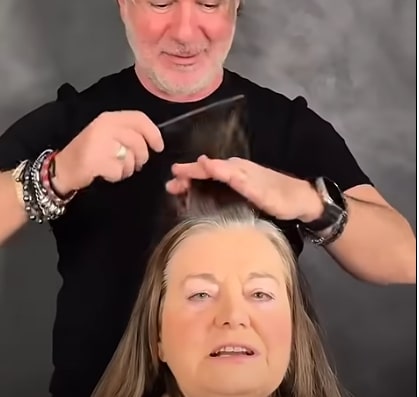For fifty years, Eleanor Reed wore her hair the same way—neatly parted, pinned in a modest bun, dusted with gray. She wasn’t one for fuss or fashion. After raising three kids, managing a household, and surviving the quiet sorrow of widowhood, appearance became secondary to routine.
Her days were soft and quiet now. Morning tea. Crossword puzzles. A weekly call from her daughter in Portland. Still, something unsettled her lately. It wasn’t loneliness, exactly—it was invisibility. In the supermarket line or at the pharmacy, no one truly saw her anymore. She was simply there, like wallpaper.
So, when her granddaughter Ava surprised her with a gift certificate to an upscale salon in the city, Eleanor hesitated. “They don’t want someone like me there,” she protested.
But Ava just smiled. “They’ll be lucky to meet you, Grandma.”
Eleanor arrived on a drizzly Thursday, umbrella tucked under her arm and nerves taut. The stylist, Mateo, greeted her with warm eyes and a genuine, “Are you ready to see yourself again?”
She almost cried at that.
The transformation began with gentle conversation, then careful snips of hair falling like autumn leaves. Mateo gave her a soft layered bob that danced at her jawline. The silver was blended with icy blonde and hints of rose gold that made her blue eyes shimmer. A light touch of makeup followed—subtle, but awakening.
When she finally looked in the mirror, Eleanor blinked twice. The woman staring back wasn’t younger. She was alive.
That evening, walking home, she caught her reflection in a shop window. For the first time in decades, she smiled at the woman she saw. Passersby smiled back.
And just like that, the world noticed her again—because she had remembered to notice herself.
Sometimes, it isn’t vanity. Sometimes, a new style is simply a quiet revolution.
